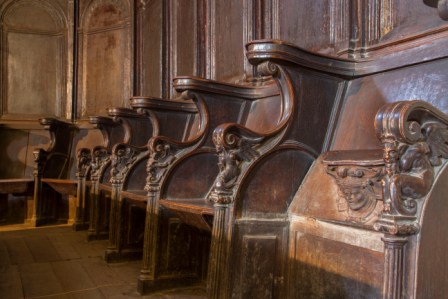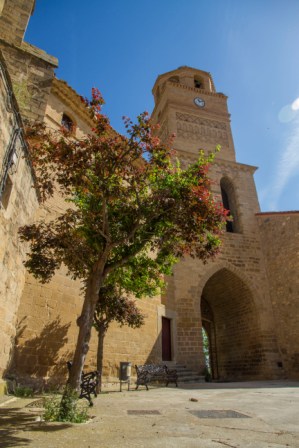September 19, 2014
Global Seminars & Invited Speaker Series
ROUTE OF THE RENAISSANCE OF NAVARRA
The Cultural Heritage of the Renaissance in Miranda de Arga
Mr. Juan Jesús Virto Ibáñez
We cannot appreciate the cultural heritage of towns and cities without knowing the artistic value of the civil buildings and churches that have been erected in these places over the centuries. When considering in our case the Spanish urbanism of the XVI and XVII centuries, we must necessarily make reference letter to the Renaissance art that, in imitation of the classical Greek and Roman antiquity, becomes fashionable in the XVI century and declines in the XVII century. It is necessary to emphasize, in the religious aspect of these two centuries, the influence in the Renaissance art of the Council of Trento, where an illustrious son of Miranda participates, the Dominican friar Bartolomé de Carranza, later archbishop of Toledo, the highest position of the Spanish Church, continuator of the intellectual fame of his uncle Sancho de Carranza, also of the Dominican order.
The memory of such illustrious countrymen, leads us to wonder, from the artistic point of view, what artistic heritage of Miranda could have known Fray Bartolomé de Carranza in some of the visits he made to his hometown around 1550 and that has come down to us. Of course the building of his Gothic church (XIV and XV centuries) and it is very possible that by the middle of the century the choir and its choir stalls were built, and in the sacristy the chest of drawers to keep the ornaments. The previous altarpiece has not come down to us, but there is a Eucharistic chest, perhaps the tabernacle of this altarpiece or a tabernacle to be carried on a platform during processions such as Corpus Christi.

Choir stalls of the Miranda de Arga parish church
(Photo: Andoni San Juan)
We do not know if in the middle of the 16th century, when Carranza visit Miranda, the main tower of the wall was rebuilt with another tower in the Mudejar style placed on top, whose author or authors we do not know. Around this time, several stonemasons are documented working in the town, both on behalf of ecclesiastics, in the construction of the abbey house in 1570, as well as in civil works. Stonemasons with the surnames of Asteasu (the primicia), Berástegui (choir stalls), Berrobi, Ceaorrote, Villabona, among others. These were the years in which a new door was opened in the church (1561), and a new brick building was built above the sacristy, today known as the sacristan's house. New is also the organ that sounds in the church in 1562, built by the master organ builder Miguel Borgoñón, to replace a previous one, already defective in sound, after the death, murdered in Aragón, of the master organ builder of Tudela, Mateo Tellez, to whom the old organ, its case and pipes, placed in Tudela itself, had been delivered in advance. His widow had to give all this to the patrons of the church of Miranda, refund .

The clock tower was finished in Mudejar style in the late 16th century.
(Photo: Andoni San Juan)
The medieval town of Miranda, built high above the valley of the river Arga, still enclosed within its medieval walls in the sixteenth century and which has been impoverished, like all the towns of Navarra, in the long years of civil war in the second half of the sixteenth century. Its irrigated lands behind the bridge have not been irrigated for years, because the war has neglected the care of the irrigation ditches. After the conquest and annexation of Navarre to the kingdom of Castile in 1515, the economic status begins to change with the opening of irrigation and the new measurement of neighboring lands, population growth, money from America arriving.... Now with peace, the medieval village extends its hamlet to the leave part of the hill.
Miranda, however, has been given to the Count of Lerin, the third in name, by Ferdinand the Catholic to thank him for his financial aid in the conquest of Navarre and has become a stately village. Almost the entire 16th century, Miranda will be under his obedience - it will be the count who will appoint the mayor and not the neighbors - until in 1591 the royal courts declare Miranda free from its lord, the Count of Lerín.
History and art have complemented each other when it comes to knowing and understanding the 16th century in Miranda.
